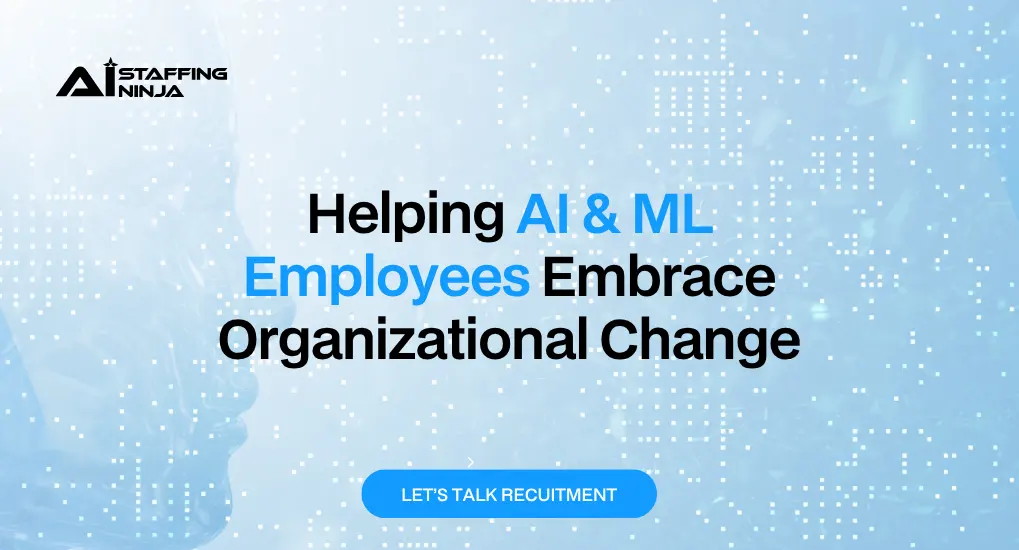
- By : By Niharika Deshpande
Tips to Help AI & ML Employees Accept Change in the Workplace

We dwell in a world that evolves constantly in every walk of life. Therefore, in professional workplaces, encountering changes in technology, policies, or leadership is natural and inevitable, to which most employees object, owing to discomfort and unfamiliarity. This article becomes handy at such a juncture as it sheds light on the practical strategies to assist such employees in accepting and adjusting to every obligatory workplace change and emerge stronger together as a team.
Why Do Employees Resist Change?
The familiar reasons behind employees resisting even a simple workplace change are discussed here.
a) Fear of Job Loss
Fear of losing their job naturally creeps into employees while restructuring or adopting new technologies. Magnifying this fear worsens resistance rather than calming it. It is, therefore, essential to reassure your employees of their job security and reiterate the fresh opportunities the workplace change bestows.
b) Discomfort with New Processes
While adapting to workplace changes, employees show resilience. They have been used to their usual procedures for a long time, which puts them in discomfort. Although the unfamiliar processes might be overwhelming, employees struggle to gel in without the right guidance. Companies ought to recognize this discomfort and overcome it by providing apt counsel.
c) Lack of Clear Communication
Incorporating sudden changes out of the blue causes confusion and a feeling of being left out, which disturbs them emotionally and eventually impacts their productivity. Therefore, it is essential for organizations to invoke changes to communicate their scope and needs so that employees align with the organization’s objective.
How to Make Workplace Changes Easier for Employees?
a) Talk to Employees Before Making Big Changes
Companies must update their employees before the forthcoming changes. Rather than shocking them with sudden changes, organizing frequent meetings, emails, discussions, or chats to narrate the needs and impacts of the changes prepares them mentally. Also, welcoming employee inquiries helps in overcoming change resistance with ease.
b) Involve Employees in the Process
Involving employees in the change process surges their sense of inclusion, eventually subsiding their resilience. Companies going through the change can request employees’ suggestions through questionnaires, group discussions, surveys, or emails. Also, providing room for employees to have hands-on experience well before implementing them fully facilitates an easier transition.
c) Offer Proper Training and Support
Organizing employee training for workplace change management lets employees easily and confidently work on the new tools or procedures. Constant training sessions provide hands-on experience, step-by-step guidance bestows confidence, pep talks boost emotions, and mentorship programs facilitate the needed expertise.
d) Show Employees How Changes Benefit Them
Employees must visualize how the changes would ease their monotonous work or improve their careers. The manager must highlight its benefits, such as growth in efficiency, refinement in skills, room for new opportunities, elevation in a professional career, and the assurance of achieving the impossible. Leading companies like Domino’s Pizza, Microsoft, Lego, and more are testimonials to successful employee change management and improved employee experience.
e) Encourage a Growth Mindset
It all begins from the head! Yes, employees must be nurtured to perceive changes as opportunities to learn instead of evading threats. Managers must often remind employees that adapting to workplace changes helps them overcome resilience and lets them remain competitive in their professional careers.
The Role of Leaders in Managing Change
The leaders’ role in employee change management stands crucial. This section highlights how they play a significant role in making workplace transitions smoother.
Managers ought to exhibit a positive attitude towards incorporating changes, which employees are sure to adhere to. Leaders must prioritize clear communication, listen to employees’ concerns, and readily drive them with encouraging words, actions, and worthwhile rewards. Leaders must involve all employees based on their potential, which makes them feel inclusive. Above all, when leaders rightly identify those employees who can productively adapt well to changes and build a conducive environment, they are assured of inculcating a culture that welcomes change fondly. Such managers fuel creativity and innovations, which takes their company to a wholesome, refined dimension.
Conclusion
Remember that change is unavoidable. However, sticking to the right strategy makes it a positive experience altogether. Companies embracing changes must prioritize clear communication, involve every employee, and organize the right training methods to accomplish smoother transitions. With numerous innovations in technologies, there is ample room for remarkable growth when companies oblige to embrace changes rather than hold on to traditional practices.